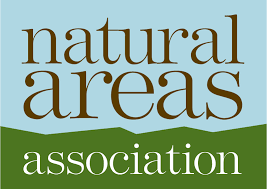Location
The Natural Areas Association is the only national, non-profit membership organization that is dedicated to the support and advancement of the community of natural areas professionals.
Together, we envision a world where science-based conservation is the bedrock of protecting the beauty and wonder of nature.
Our members work to protect and restore natural areas, ecosystems and landscapes, and include natural lands managers, natural resource managers, land trust staff and volunteers, biologists, ecologists, researchers, policy specialists, educators, students, and anyone with an active interest in environmental conservation and natural areas stewardship.
We:
- Support, nurture and advance the community of NA professionals
- Advance natural area conservation through access to the latest research findings, as well as emerging management techniques and conservation practices
- Promote an understanding and appreciation of natural areas, and the people who work to steward them
- Advocate for legislation that supports and funds initiatives important to natural areas
- Reflect the consensus of natural areas professionals through statements of policy
Members:
Resources
Displaying 11 - 12 of 12Life History and Demography of Astragalus microcymbus Barneby (Fabaceae)
Astragalus microcymbus (Fabaceae) is a rare forb endemic to Gunnison County, Colorado. For 17 years, Denver Botanic Gardens and the U.S. Bureau of Land Management (Colorado State Office) have monitored four populations of this candidate species under the ESA in the South Beaver Creek Natural Area. Large, statistically significant population declines have been documented, as have prolonged dormancy, episodic fruit production, and herbivory.
Fire and Herpetofaunal Diversity in the Florida Scrub Ecosystem
The Florida Scrub ecosystem depends on fire to sustain ecosystem function and to support resident plant and animal species. A recent study addressed the relationship between the time since last fire (TSF) and resident amphibians and reptiles in rosemary bald, one Florida Scrub habitat type. This is a parallel study in another Florida Scrub habitat type, scrubby flatwoods, at Archbold Biological Station (ABS), Lake Placid, Florida, USA. We installed 36 400-m² enclosures (four burn units within each of three TSF categories X 3 replicates per burn unit) at ABS.


